Abstract
The effect of posture on the EMG pattern of the normal auditory startle reflex was investigated. The startle response to an unexpected auditory tone was studied in eleven normal subjects when standing, and in six normal subjects when sitting relaxed or tonically plantar flexing both feet. Reflex EMG activity was recorded in the tibialis anterior and soleus about twice as frequently when standing, than when sitting relaxed. In addition, the median latencies to onset of reflex EMG activity in the tibialis anterior and soleus were about 40 and 60 ms shorter during standing, than when sitting relaxed. No short latency EMG activity was recorded in the calf muscles during tonic plantar flexion of the feet, while sitting. The effect of posture on the EMG pattern of the pathological auditory startle reflex was studied in five patients with hyperekplexia. In three patients the latency to onset of reflex EMG activity in the tibialis anterior was shorter when standing, than when sitting relaxed. The EMG pattern of the reflex response to sound was studied in detail in two of these patients and consisted of up to three successive components. The expression of each EMG component depended on the postural set of the limbs. In particular, a distinct short latency component was found in posturally important muscles following auditory stimulation. This short latency component was not recorded when sitting relaxed. It is concluded that the EMG pattern of the physiological and pathological auditory startle response is not fixed, but may change with the postural stance of the body. This finding supports the theory that the normal startle reflex and the abnormal startle reflex in hyperekplexia have a common brainstem origin.
Full text
PDF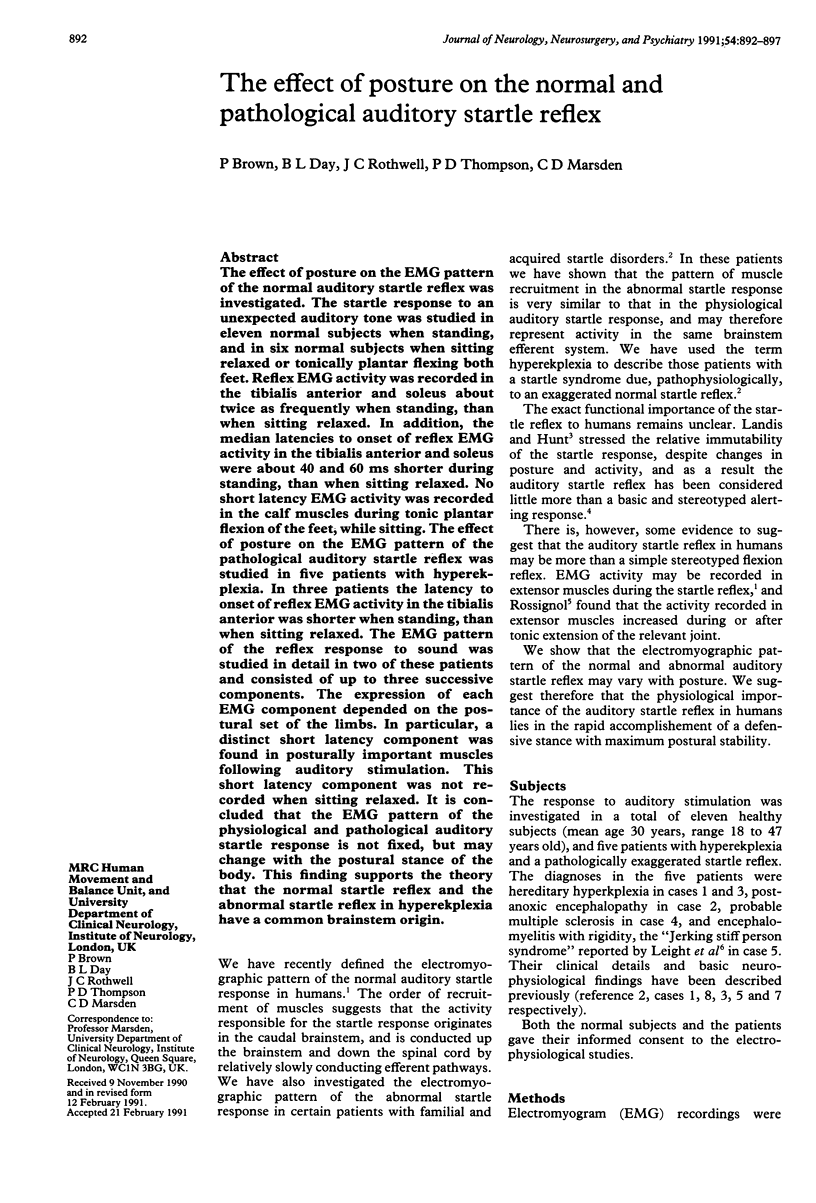
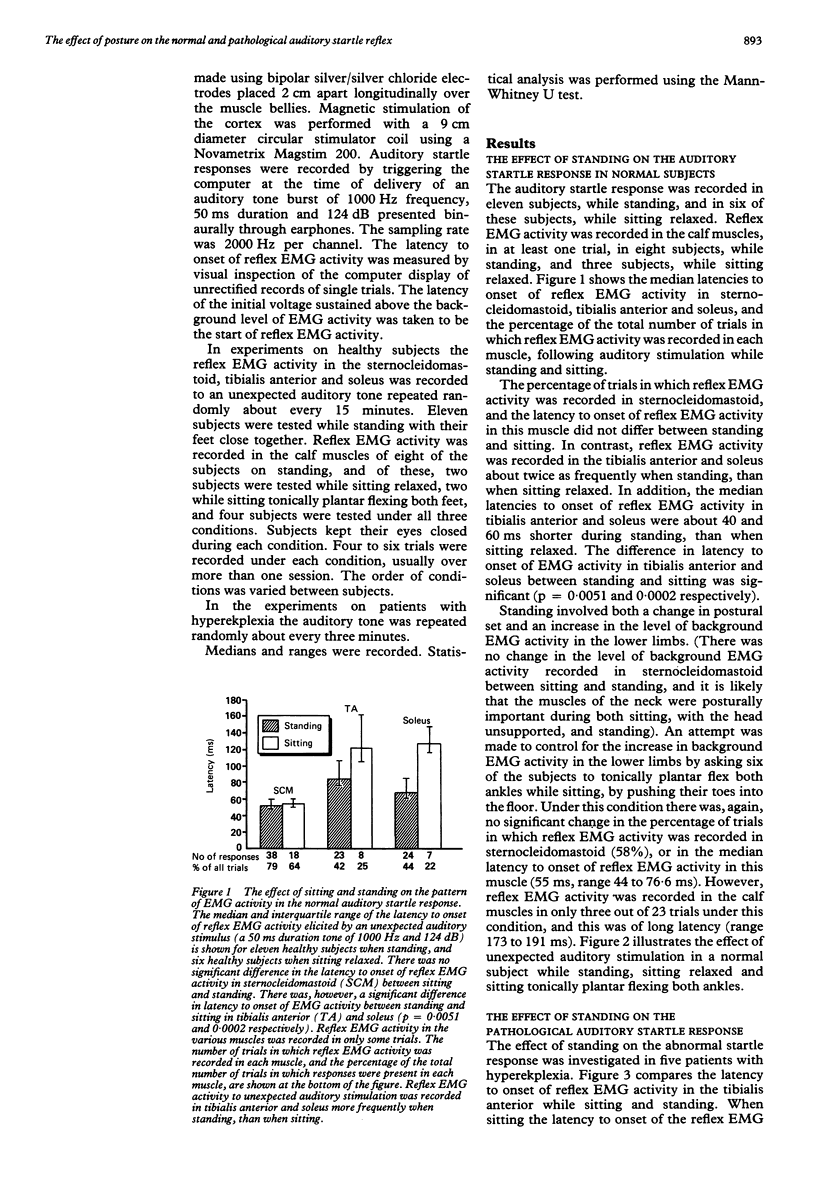
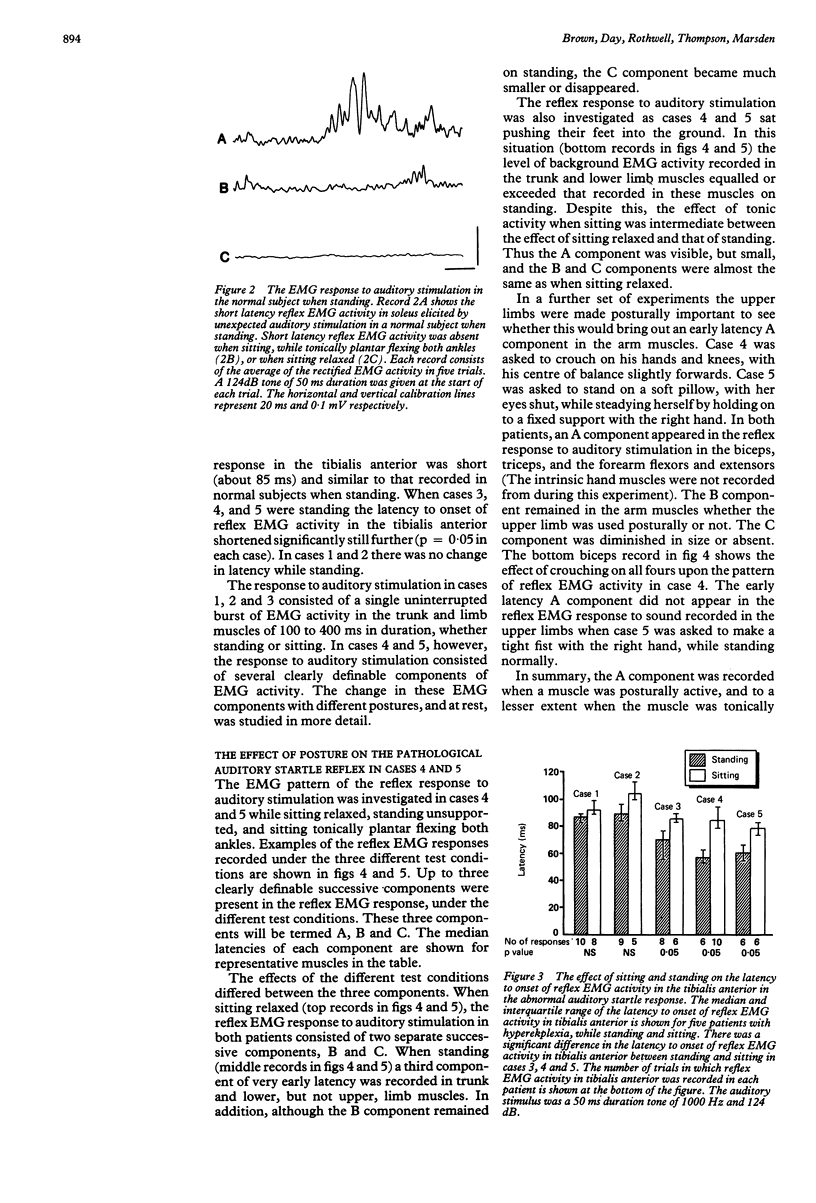
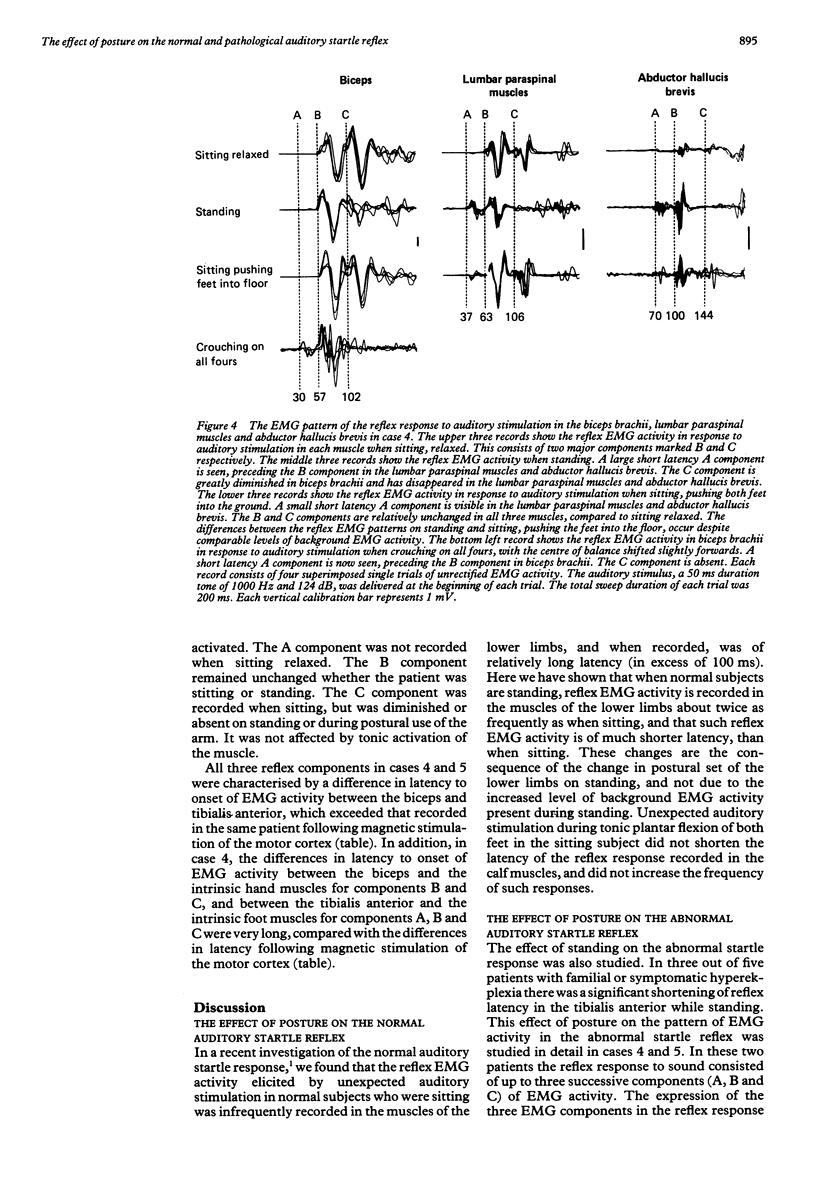
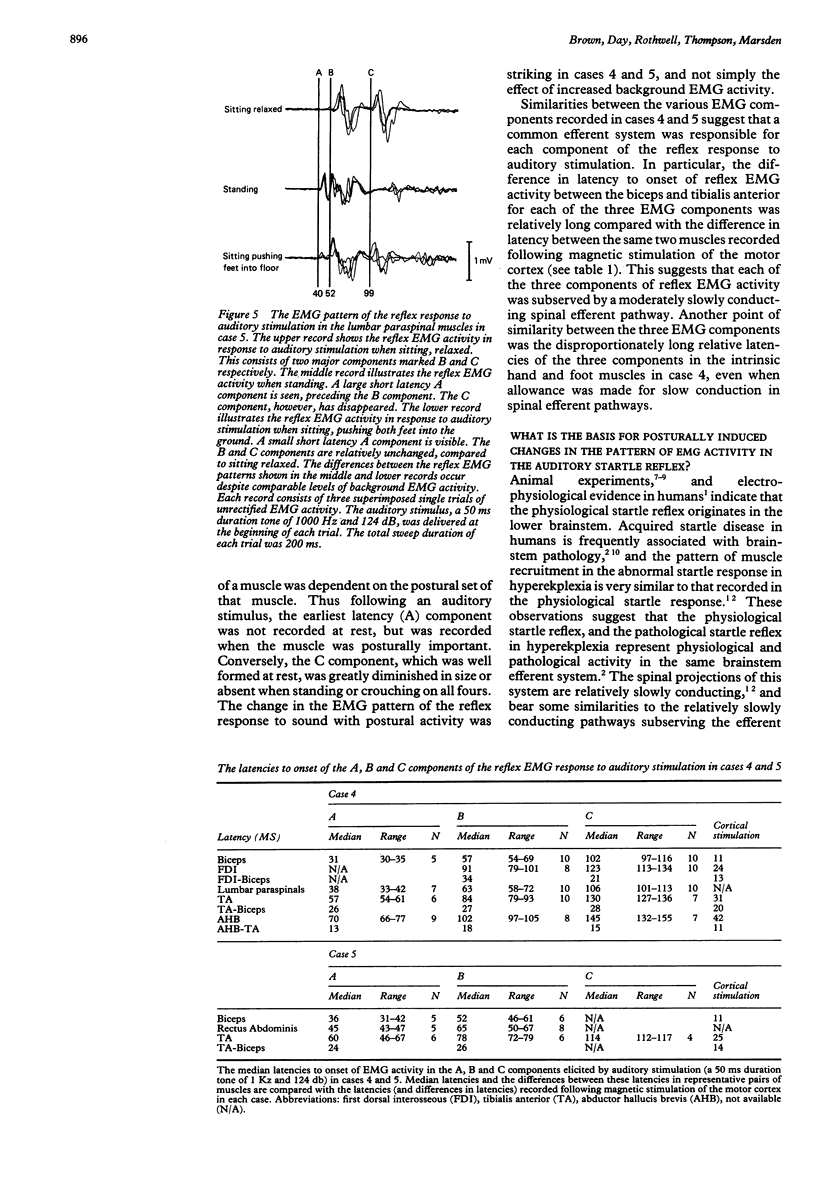
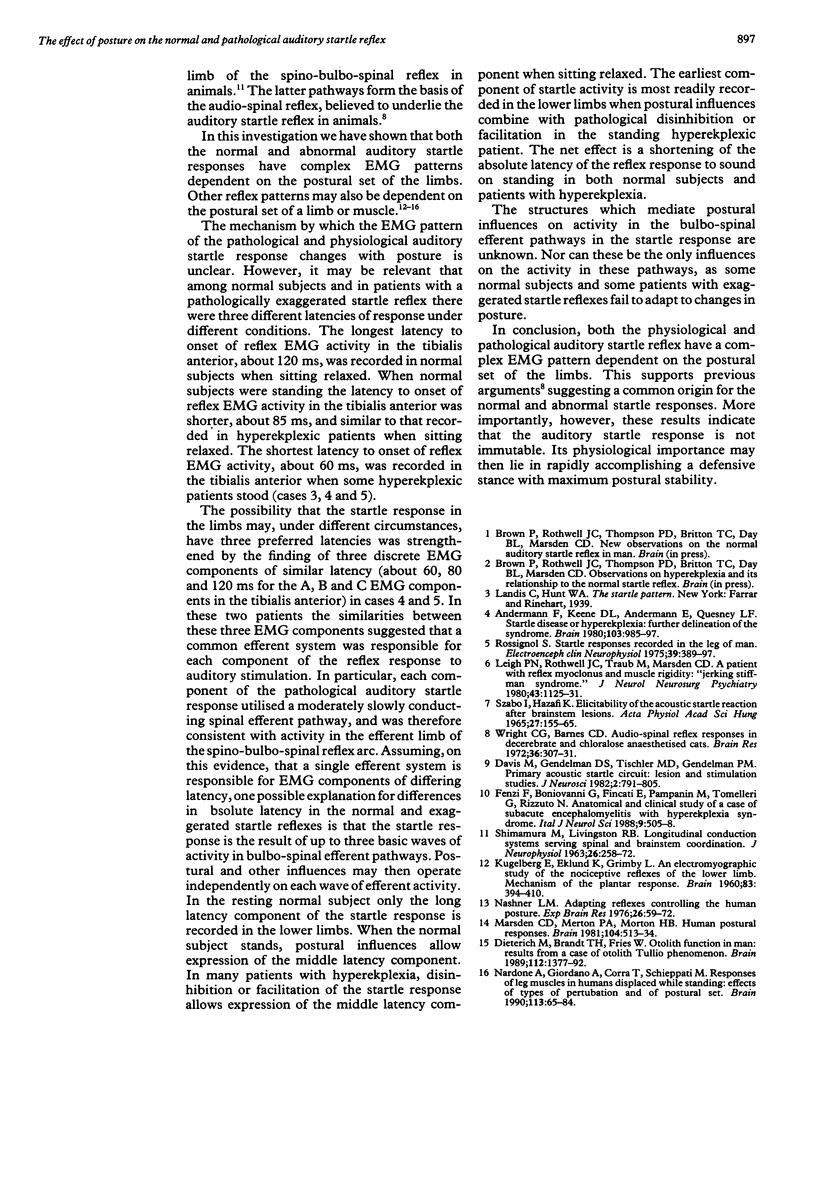
Selected References
These references are in PubMed. This may not be the complete list of references from this article.
- Andermann F., Keene D. L., Andermann E., Quesney L. F. Startle disease or hyperekplexia: further delineation of the syndrome. Brain. 1980 Dec;103(4):985–997. doi: 10.1093/brain/103.4.985. [DOI] [PubMed] [Google Scholar]
- Davis M., Gendelman D. S., Tischler M. D., Gendelman P. M. A primary acoustic startle circuit: lesion and stimulation studies. J Neurosci. 1982 Jun;2(6):791–805. doi: 10.1523/JNEUROSCI.02-06-00791.1982. [DOI] [PMC free article] [PubMed] [Google Scholar]
- Dieterich M., Brandt T., Fries W. Otolith function in man. Results from a case of otolith Tullio phenomenon. Brain. 1989 Oct;112(Pt 5):1377–1392. doi: 10.1093/brain/112.5.1377. [DOI] [PubMed] [Google Scholar]
- Fenzi F., Bongiovanni G., Fincati E., Pampanin M., Tomelleri G., Rizzuto N. Anatomical and clinical study of a case of subacute encephalomyelitis with hyperekplexia syndrome. Ital J Neurol Sci. 1988 Oct;9(5):505–508. doi: 10.1007/BF02337170. [DOI] [PubMed] [Google Scholar]
- Illis L. S., Sedgwick E. M., Tallis R. C. Spinal cord stimulation in multiple sclerosis: clinical results. J Neurol Neurosurg Psychiatry. 1980 Jan;43(1):1–14. doi: 10.1136/jnnp.43.1.1. [DOI] [PMC free article] [PubMed] [Google Scholar]
- KUGELBERG E., EKLUND K., GRIMBY L. An electromyographic study of the nociceptive reflexes of the lower limb. Mechanism of the plantar responses. Brain. 1960 Sep;83:394–410. doi: 10.1093/brain/83.3.394. [DOI] [PubMed] [Google Scholar]
- Marsden C. D., Merton P. A., Morton H. B. Human postural responses. Brain. 1981 Sep;104(3):513–534. doi: 10.1093/brain/104.3.513. [DOI] [PubMed] [Google Scholar]
- Nardone A., Giordano A., Corrà T., Schieppati M. Responses of leg muscles in humans displaced while standing. Effects of types of perturbation and of postural set. Brain. 1990 Feb;113(Pt 1):65–84. doi: 10.1093/brain/113.1.65. [DOI] [PubMed] [Google Scholar]
- Nashner L. M. Adapting reflexes controlling the human posture. Exp Brain Res. 1976 Aug 27;26(1):59–72. doi: 10.1007/BF00235249. [DOI] [PubMed] [Google Scholar]
- Rossignol S. Startle responses recorded in the leg of man. Electroencephalogr Clin Neurophysiol. 1975 Oct;39(4):389–397. doi: 10.1016/0013-4694(75)90102-9. [DOI] [PubMed] [Google Scholar]
- SHIMAMURA M., LIVINGSTON R. B. Longitudinal conduction systems serving spinal and brain-stem coordination. J Neurophysiol. 1963 Mar;26:258–272. doi: 10.1152/jn.1963.26.2.258. [DOI] [PubMed] [Google Scholar]
- Wright C. G., Barnes C. D. Audio-spinal reflex responses in decerebrate and chloralose anesthetized cats. Brain Res. 1972 Jan 28;36(2):307–331. doi: 10.1016/0006-8993(72)90737-8. [DOI] [PubMed] [Google Scholar]


